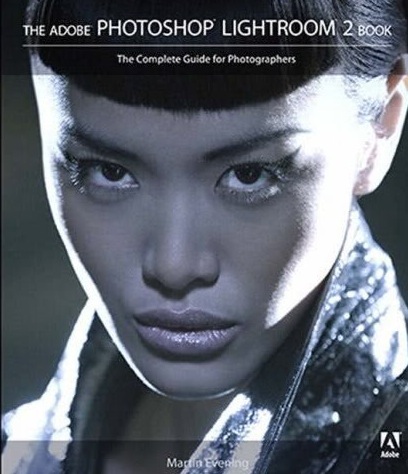Evening writes good English.
It’s now coming on for two years since I made the painful switch from Aperture to Lightroom and scarcely a day passes when I do not rejoice in that decision.
From the resource intensive Aperture (sells more ‘newer, faster’ Macs, I suppose), illogical and buggy application to one that is logical, has yet to lock-up on me and is blisteringly fast on my middle-of-the road iMac, Lightroom (I’m on version 2.4) is a joy to use. I visit some of the Lightroom blogs now and then and find I am always picking up new tips, no thanks to the lack of a proper instruction book from Adobe, as none is bundled with the software.
Indeed, to my own surprise, I actually find that after 50 years of processing pictures, I’m beginning to enjoy what is ordinarily a drudge. Anyway, a while back I decided to get a good book on the product as it was increasingly irritating to find out more or or less by accident about features that really helped the processing step along.
In selecting my book of choice, the first dictate was that it had to be written by a photographer who can actually take good pictures. Why on earth would you want to learn any skill from an academic, clueless in real life application of his expertise? That dictate promptly excluded most of the many books out there – some of these people really have no right to be preaching about Lightroom when they cannot take a well composed, decent photograph.
The second driver was that the author has outstanding communication skills.

Having watched some of his instructional videos on the web the book to choose was easy – Martin Evening’s The Adobe Photoshop Lightroom 2 Book: The Complete Guide for Photographers. (Disclosure: The link is to Amazon – I get no ‘click through’ payment if you click on it. I have no position in AMZN at the time of writing.)
My main reason for buying a good reference manual, dictated by the poor quality of the materials included with the software and the generally poor Help files within LR – was that I wanted to be absolutely sure how best to integrate two catalogs of pictures. I wanted to add the one from my laptop to the master on my desktop computer. While I have daily back-ups of everything, I would rather get this right first thing than scramble to recover from mistakes by resorting to the back-up.
Evening’s book not only walked me through this in accurate detail, I found that it added value in many other areas where the apparently simple user interface of LR hides many special functions, often invoked through the use of the Alt key on the keyboard. Areas where I find real value was added include:
- Importing and creation of import profiles specific to a camera or lens
- Using filters to find images
- White balance corrections
- Sharpening – a whole chapter, much of it addressing magic simply invisible to the normal user
- Custom profile printing
The book, at 600 pages, seems long, until you realize that much of that is the result of copious illustrations which make it much easier to follow along. I still think of it more as a dictionary – something you look up to learn from – than a tutorial, but I find I keep it at hand when processing and frequently dip in to learn a new trick or two.
It’s published by Adobe Press (I only learned this after buying it – it was most certainly not a reason for purchase) which simply begs the question why it isn’t included with the software in the first place.
Quibbles? On p. 582 Evening states “The graphics card does not play such a vital role in Lightroom’s overall performance.” This contrasts with my experience which shows that screen rendering of previously generated previews when flicking between images is considerably faster with the new nVidia 7600 GPU (256 mB RAM) in my iMac 24″, compared with that using the nVidia 7300 GPU (128 mB) it replaced. But I have no objective measurements to bear this out and it may just be the placebo effect at work as I try to justify all the time I have had to waste in repairing my faulty Apple computer.
Overall, it’s a fine manual by a real, working photographer who has had the benefit of a proper education in the use of the English language. Highly recommended.